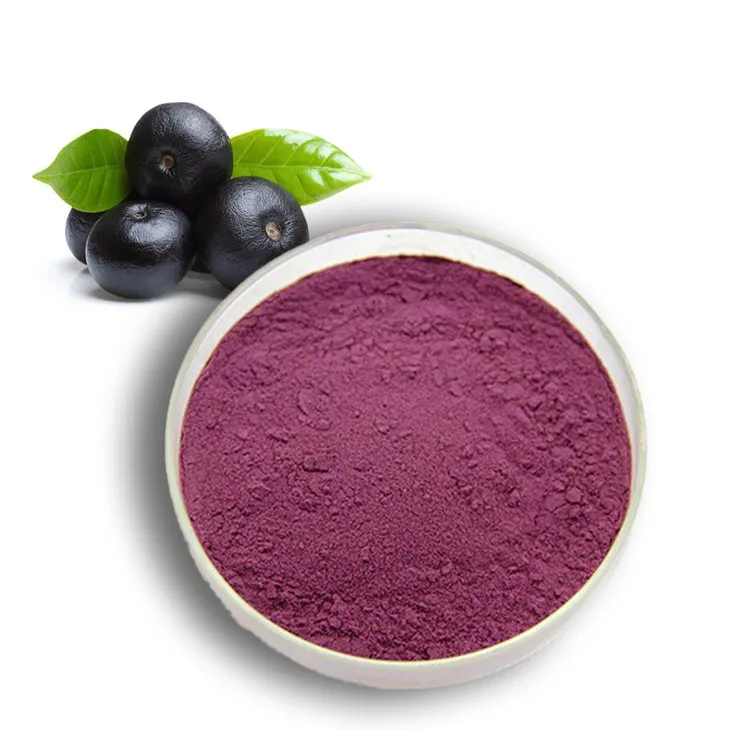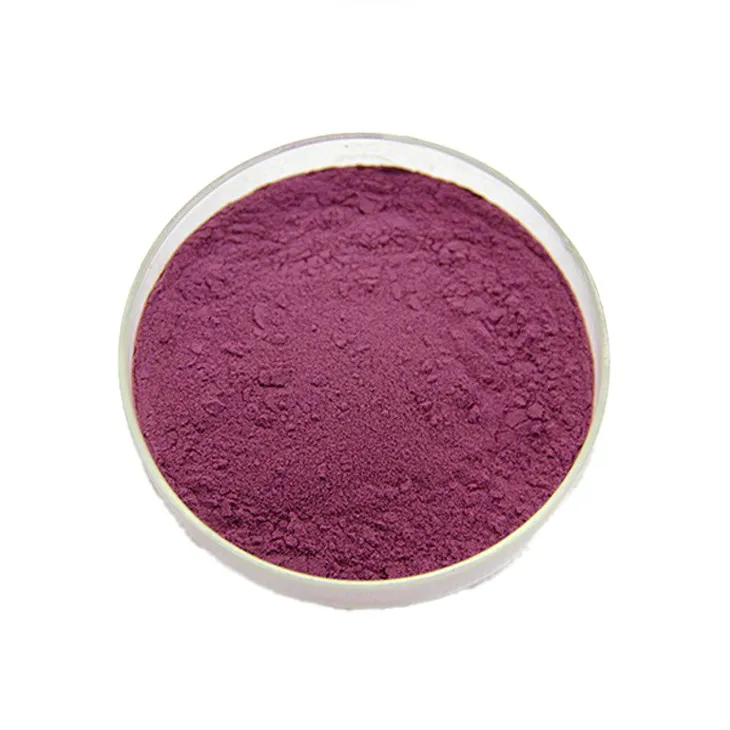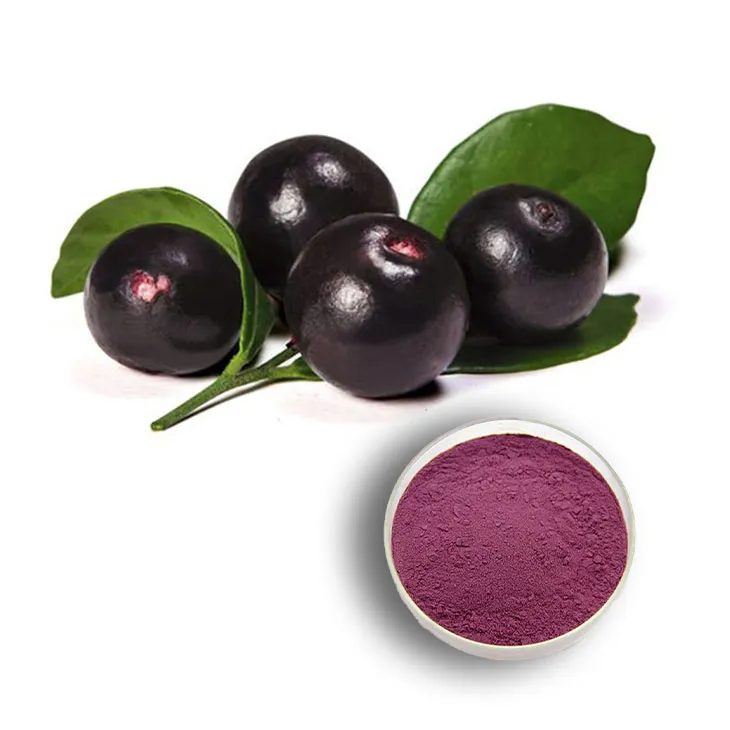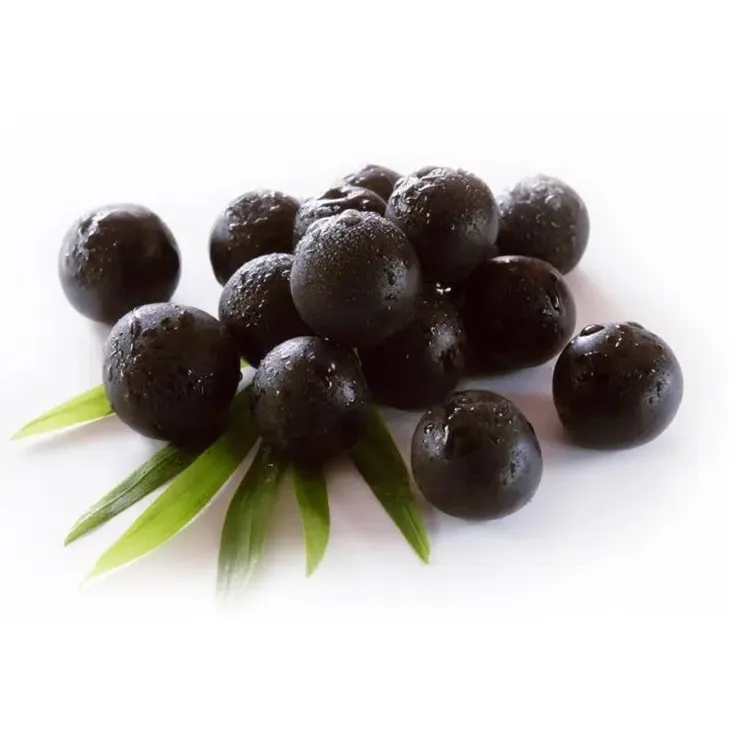- 0086-571-85302990
- sales@greenskybio.com
The best method for extracting acai berry extract.
2024-11-27

1. Introduction
Acai berry has gained significant popularity in recent years due to its high nutritional value and antioxidant properties. Acai Berry Extract is rich in vitamins, minerals, fatty acids, and polyphenols, making it a sought - after ingredient in the food, cosmetic, and pharmaceutical industries. However, to obtain high - quality Acai Berry Extract, the extraction method plays a crucial role. There are mainly three types of extraction methods: mechanical, chemical, and enzymatic extraction. Each method has its own advantages and limitations, and optimizing these methods can help maximize the extraction of nutrients and antioxidants from acai berries.

2. Mechanical extraction methods
2.1. Pressing
Pressing is one of the simplest mechanical extraction methods. The acai berries are first cleaned and then crushed. The crushed berries are then subjected to pressure, either by a hydraulic press or a screw press. The pressure forces the juice out of the berries, leaving behind the solid residue. One advantage of this method is that it is a natural and chemical - free process, which is ideal for those who prefer organic products. However, it has some limitations. The extraction efficiency is relatively low, and a significant amount of valuable components may still be left in the residue. For example, some of the lipid - soluble antioxidants may not be fully extracted using this method alone.
2.2. Grinding and sieving
Another mechanical method involves grinding the acai berries into a fine powder and then sieving to separate the different components. The berries are ground using a grinder, such as a mortar and pestle or an electric grinder. After grinding, the powder is passed through a sieve. The finer particles, which contain the extractable components, can pass through the sieve, while the larger particles are retained. This method can be used to obtain a more concentrated extract compared to simple pressing. However, it also has drawbacks. The grinding process may generate heat, which can potentially degrade some of the heat - sensitive nutrients in the acai berries. Additionally, the sieving process may not be able to completely separate all the desired components from the unwanted ones.

3. Chemical extraction methods
3.1. Solvent extraction
Solvent extraction is a commonly used chemical method for Acai Berry Extraction. Common solvents used include ethanol, methanol, and hexane. The acai berries are first dried and then soaked in the solvent. The solvent dissolves the desired components from the berries, such as the polyphenols and fatty acids. After a certain period of soaking, the solution is filtered to separate the solvent - containing extract from the solid residue. Ethanol is a popular solvent choice as it is relatively safe and can effectively extract a wide range of components. However, the use of solvents also has some concerns. Residual solvents in the final extract may pose a safety risk if not removed completely. Also, some solvents may not be very selective in extracting only the desired components, and may also extract some unwanted substances.
3.2. Acid - base extraction
Acid - base extraction is another chemical approach. In this method, an acid or a base is added to the acai berry sample to adjust the pH. Different components in the berries have different solubilities at different pH values. By adjusting the pH, certain components can be selectively extracted. For example, some polyphenols may be more soluble in an acidic environment. However, this method requires careful control of the pH. If the pH is not properly adjusted, it can lead to degradation of some components or incomplete extraction. Also, the addition of acids and bases may introduce impurities into the final extract, which need to be removed through additional purification steps.

4. Enzymatic extraction methods
4.1. Enzyme selection
Enzymatic extraction uses enzymes to break down the cell walls of acai berries, facilitating the release of the internal components. Common enzymes used include cellulases, pectinases, and proteases. Cellulases can break down the cellulose in the cell walls, pectinases can act on the pectin, and proteases can hydrolyze the proteins. The selection of the appropriate enzyme or enzyme combination is crucial. For example, if the main target is to extract polysaccharides, cellulases may be the primary enzyme of choice. However, if the goal is to extract a more comprehensive range of components, a combination of enzymes may be more effective.
4.2. Enzymatic reaction conditions
The reaction conditions for enzymatic extraction also play a vital role. Parameters such as temperature, pH, and enzyme concentration need to be optimized. The optimal temperature for most enzymes used in acai berry extraction is usually in the range of 30 - 50°C. If the temperature is too low, the enzyme activity will be slow, and if it is too high, the enzyme may be denatured. The pH also needs to be adjusted according to the type of enzyme used. For example, cellulases usually work best at a slightly acidic pH. Enzyme concentration should be carefully determined. Too low a concentration may result in incomplete extraction, while too high a concentration may be costly and may also lead to side reactions.

5. Optimization of extraction parameters
5.1. Temperature
Temperature is a critical parameter in all extraction methods. In mechanical extraction, excessive heat generation during grinding should be avoided. In chemical extraction, the temperature can affect the solubility of components in solvents and the stability of the extract. In enzymatic extraction, as mentioned above, the optimal temperature range for enzyme activity must be maintained. For acai berry extraction, a temperature range of 30 - 50°C is often considered suitable for most methods, as it can balance the extraction efficiency and the stability of the components.
5.2. Time
The extraction time also needs to be optimized. In pressing, a longer pressing time may increase the yield, but it may also lead to over - extraction of some unwanted components. In solvent extraction, a sufficient soaking time is required for the solvent to fully dissolve the desired components, but if the time is too long, it may cause degradation of some components or increase the risk of solvent residue. In enzymatic extraction, the reaction time should be long enough for the enzymes to complete their action on the cell walls, but not so long that the enzymes start to degrade the extracted components.
5.3. Particle size
Particle size is an important factor, especially in mechanical extraction methods. Smaller particle sizes generally result in a higher extraction yield. In grinding and sieving, a finer powder can increase the surface area available for extraction. However, in some cases, extremely small particle sizes may also cause problems, such as clogging in the extraction equipment or increased difficulty in separating the extract from the residue.
6. Comparison of extraction methods
Each extraction method has its own characteristics. Mechanical extraction methods are relatively simple and natural, but their extraction efficiency may be lower. Chemical extraction methods can achieve relatively high extraction yields, but there are concerns about solvent residues and selectivity. Enzymatic extraction methods are highly selective and can preserve the integrity of the components well, but they require more precise control of reaction conditions and enzyme selection. In conclusion, a combination of these methods may be the best approach in some cases. For example, a pre - treatment of acai berries with enzymes to break down the cell walls, followed by solvent extraction, may result in a high - quality extract with high extraction efficiency.
7. Conclusion
Acai berry extract is a valuable product with numerous potential applications. To obtain high - quality acai berry extract rich in nutrients and antioxidants, the extraction method needs to be carefully selected and optimized. Mechanical, chemical, and enzymatic extraction methods each have their own advantages and limitations. By optimizing extraction parameters such as temperature, time, and particle size, and in some cases, combining different extraction methods, it is possible to maximize the benefits of acai berry extract and meet the requirements of different industries.
FAQ:
What are the main extraction methods for acai berry extract?
There are mainly three extraction methods for acai berry extract. The mechanical extraction method involves processes like pressing to obtain the extract. Chemical extraction uses solvents to dissolve the components from the acai berries. Enzymatic extraction utilizes enzymes to break down the cell walls and release the desired substances.
How can the mechanical extraction method be optimized for acai berry extract?
To optimize the mechanical extraction of acai berry extract, proper equipment selection is crucial. Using high - quality presses with appropriate pressure settings can enhance the extraction efficiency. Also, pre - treatment of the acai berries such as washing, drying, and grinding to an optimal particle size can improve the yield. Additionally, controlling the extraction temperature and time can further optimize the mechanical extraction process.
What solvents are commonly used in chemical extraction of acai berry extract?
Common solvents used in the chemical extraction of acai berry extract include ethanol and methanol. These solvents are effective in dissolving a wide range of bioactive compounds present in the acai berries. However, the choice of solvent also depends on factors such as the desired components to be extracted, safety considerations, and the subsequent purification steps.
How do enzymes work in enzymatic extraction of acai berry extract?
Enzymes work by specifically targeting the cell wall components of the acai berries in enzymatic extraction. For example, cellulases can break down the cellulose in the cell walls, and pectinases can act on the pectin. This enzymatic action helps to release the intracellular contents, including nutrients and antioxidants, into the extraction medium more effectively than mechanical or chemical methods alone.
What are the crucial extraction parameters for maximizing the antioxidant content in acai berry extract?
The crucial extraction parameters for maximizing the antioxidant content in acai berry extract include temperature, extraction time, and the ratio of acai berries to the extraction medium. A moderate temperature, not too high to avoid degradation of antioxidants, and an appropriate extraction time are important. Also, the right proportion of acai berries to the solvent or other extraction medium can ensure efficient extraction of antioxidants.
Related literature
- Optimization of Acai Berry Extract Extraction: A Review of Methods and Parameters"
- "The Role of Different Extraction Techniques in Obtaining High - Quality Acai Berry Extract"
- "Enzymatic Extraction of Acai Berry: Unlocking the Full Potential of Nutrients"
- ▶ Hesperidin
- ▶ citrus bioflavonoids
- ▶ plant extract
- ▶ lycopene
- ▶ Diosmin
- ▶ Grape seed extract
- ▶ Sea buckthorn Juice Powder
- ▶ Beetroot powder
- ▶ Hops Extract
- ▶ Artichoke Extract
- ▶ Reishi mushroom extract
- ▶ Astaxanthin
- ▶ Green Tea Extract
- ▶ Curcumin Extract
- ▶ Horse Chestnut Extract
- ▶ Other Problems
- ▶ Boswellia Serrata Extract
- ▶ Resveratrol Extract
- ▶ Marigold Extract
- ▶ Grape Leaf Extract
- ▶ blog3
- ▶ blog4
-
Chinese Withania somnifera Extract Factory.
2024-11-27
-
中国松树皮提取物粉粉末供应商
2024-11-27
-
High - quality Marigold Extract Products.
2024-11-27
-
100% Pure Natural Mango - Flavored Powder.
2024-11-27
-
Eyebright Extract
2024-11-27
-
Red Vine Extract
2024-11-27
-
Reishi mushroom extract
2024-11-27
-
Sea buckthorn oil
2024-11-27
-
Citrus Aurantii Extract
2024-11-27
-
Red Wine Extract
2024-11-27
-
Chasteberry Extract
2024-11-27
-
Nettle leaf extract
2024-11-27
-
Bamboo Leaf extract
2024-11-27
-
Mulberry Extract
2024-11-27





















